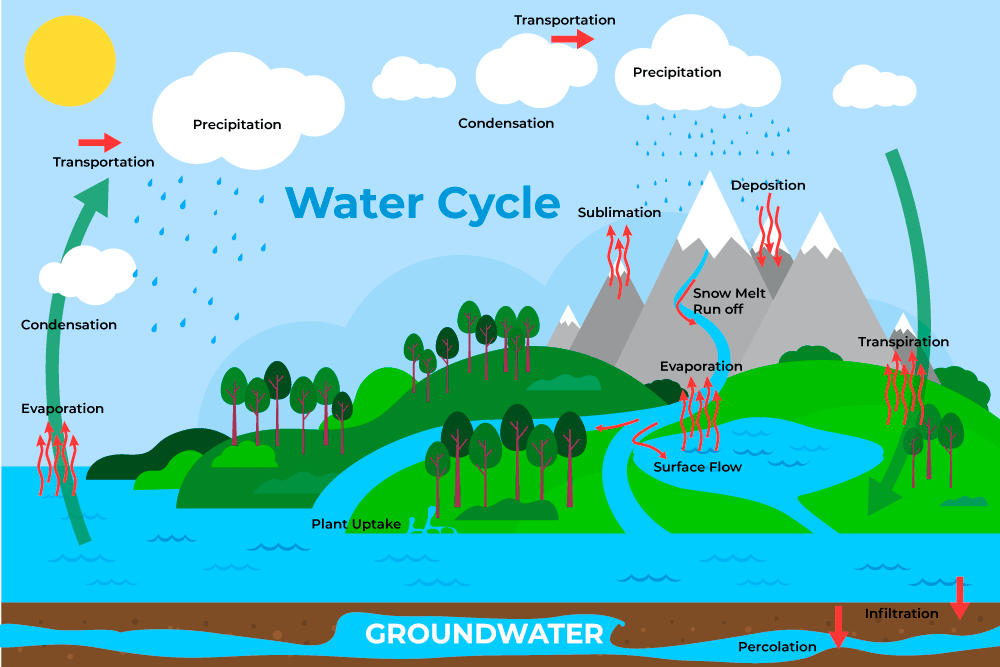What is the Water Cycle? | Types, Definition, Structure, Function & Facts
What is the Water Cycle?
The water cycle is how water moves around the Earth. It never stops and has no real beginning or end. It’s like a big circle. We will describe it starting with the water found on earth. For example, water resides in the ocean or in a lake. Some of the water on the ocean’s surface evaporates due to the heat of the sun. When it evaporates, it turns into water vapor and rises into the atmosphere.
This water vapor gathers with many other water vapors and turns into clouds. Clouds move over the earth over time, and once they are filled with water, they drop the water onto the earth as rain. It can be rain, snow, sleet or hail. When water hits land, it can fall straight back into the ocean or nurture a flower or form snow on top of a mountain. Eventually, this water will evaporate and start the whole cycle over.
Get Free Counseling
How does water goes from Land to Vapor in the Atmosphere?
Water on earth turns into steam in three main ways:
Evaporation – This is the main process by which water moves from the ground into atmospheric vapor. About 90% of the water vapor in the atmosphere reached it by evaporation. Evaporation takes place only on the surface of the water. It consumes energy in the form of heat. Hot water is more volatile than cold water. The sun provides much of the energy needed for evaporation in the water cycle, which mainly causes evaporation from the ocean surface.
Sublimation – This is when water directly turns into vapor from ice or snow without ever dissolving into water. Good conditions for sublimation to occur are when the ice or snow is in very cold conditions, but it is windy and sunny.
Transpiration – Transpiration is when plants release water on their leaves, which then evaporates into vapor. Plants release a lot of water as they grow. It is estimated that about 10% of the water vapor in the atmosphere comes from transpiration.
Water in the Atmosphere
We see water in the atmosphere as clouds. There is a small amount of water even when the sky is clear, but the clouds are where the water begins to condense. Condensation is the process by which steam becomes liquid water. Condensation is an important step in the water cycle. The atmosphere helps move water around the world. It takes water that has evaporated from the ocean and moves it overland where clouds and storms form to water plants with rain.
Precipitation
Precipitation occurs when water falls from the atmosphere to the earth. When enough water accumulates in a cloud, water droplets form and fall to the earth. Depending on the temperature and weather, it could rain, snow, sleet or even hail.
Water Storage
Much of the water on Earth does not participate in the regular water cycle. Much of it is stored. The earth stores water in many places. The ocean is the largest reservoir of water. About 96% of the water on Earth is stored in the ocean. We can’t drink saltwater from the ocean, so luckily for us, fresh water is also stored in lakes, glaciers, snow caps, rivers, and underground in groundwater storage.
